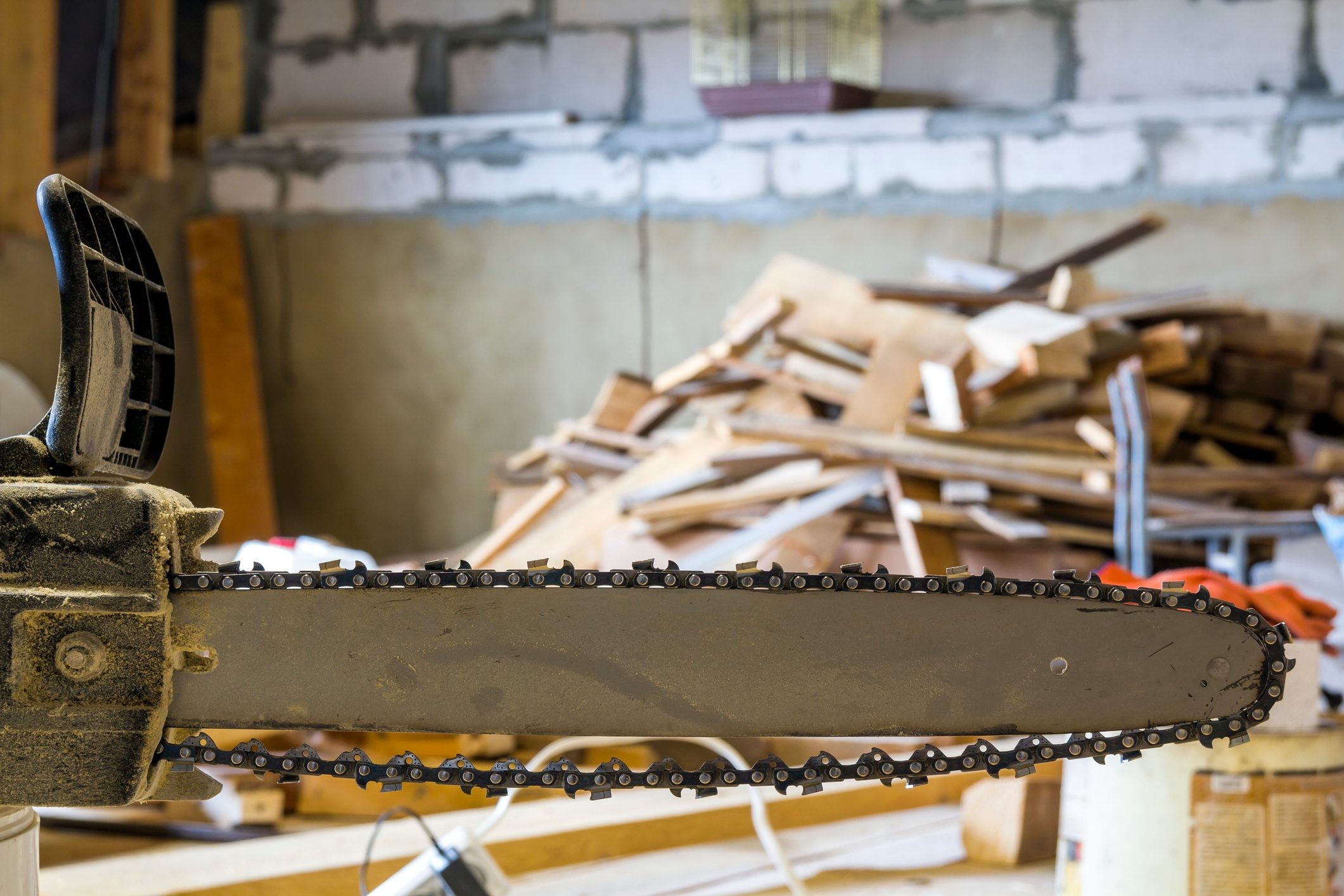Chainsaws are indispensable tools for a variety of tasks, from pruning and limbing to cutting firewood and felling trees. Replacing your chainsaw bar or chain is a common maintenance requirement, and knowing the correct size is critical for safe and efficient operation. Using the wrong size bar or chain can lead to equipment damage and potential injuries. This guide will provide you with a detailed understanding of how to accurately measure your chainsaw bar length.
Understanding Chainsaw Bar Length Measurements
Chainsaw bar length is typically measured in even numbers, representing the length of the bar itself. The bar, sometimes referred to as a chainsaw blade, serves as the metal guide that supports the chain during operation. When you purchase a “16-inch chainsaw,” you’re essentially buying a saw with a 16-inch bar.
There are two common methods for determining chainsaw bar length: effective cutting length and true bar length.
Measuring Effective Cutting Length
The effective cutting length is the most frequently used measurement. It represents the portion of the bar that’s available for cutting.
Here’s how to measure the effective cutting length:
- Position the Tape Measure: Place the end of a tape measure at the very tip of the chainsaw bar.
- Extend to the Body: Measure straight back towards the chainsaw body, stopping at the point where the bar disappears into the saw housing.
- Round Up: Round the measurement up to the nearest even number.
Chainsaws are sold in even-numbered lengths. For example, if you measure an effective cutting length of 15 inches, you need a 16-inch chainsaw bar. An 18-3/4-inch measurement indicates a 20-inch saw.
Measuring True Bar Length
The true bar length provides a precise measurement of the entire bar. This may be required to ensure a perfect fit for a replacement bar.
Here’s how to measure the true bar length:
- Loosen the Bar: Loosen the bolts that secure the bar to the chainsaw body.
- Remove the Bar: Carefully remove the bar from the chainsaw.
- Measure End to End: Place the bar on a flat surface and measure its entire length from one end to the other.
The true bar length is a precise measurement and should not be rounded.
What if My Chainsaw Bar is an Uncommon Length?
While uncommon, if your chainsaw bar doesn’t conform to standard lengths, contact the chainsaw manufacturer. They can provide you with the correct replacement sizes for both the bar and the chain.
The Risks of Using an Incorrect Bar Length
Using a chainsaw bar longer than recommended can lead to several problems. A longer bar requires more torque from the engine to drive the chain. Exceeding the recommended bar length for your saw can quickly wear out the motor and increase the risk of kickback and potential injury.
Determining Chainsaw Bar Groove Gauge
When buying a new chainsaw bar, you might also need to determine the bar groove gauge. The groove gauge is the width of the groove in the bar that the chain sits in. Here’s how to measure it:
- Gather Coins: Collect a penny, a dime, and a quarter.
- Test the Fit: Insert each coin into the bar groove, one at a time.
- Find the Best Fit: The coin that best fits the groove approximates the gauge.
 Coins used for chainsaw bar groove gauge measurement
Coins used for chainsaw bar groove gauge measurement
Here are some approximate gauge measurements using US coins:
- Quarter: .063 inch
- Dime: .058 inch
- Penny: .043 inch
Alternatively, you can purchase an inexpensive multi-gauge tool to accurately measure the chain pitch, chain gauge, and file size.
Additional Considerations for Chainsaw Chains
When purchasing a new chainsaw chain, the best approach is to find a replacement based on your chainsaw’s manufacturer and model number. Chains of the same length can vary depending on the manufacturer, so knowing the specific details of your saw is important for a proper fit. Engraving or writing the chain pitch, number of driver links, and chain link gauge on the chainsaw bar near the saw’s body can also be helpful.
Measuring Chain Pitch
The chain pitch refers to the distance between the chain’s links. To measure it:
- Measure Rivet Distance: Measure the distance between three rivets on your chain using a ruler or measuring tape.
- Divide by Two: Divide the measurement by two. The result is your chain pitch.
Common chain pitches include .25 (1/4), .325, .375 (3/8), and .404 inches.
Measuring Driver Links
The driver links are the small bumps on the inside of the chain. Counting them is straightforward:
- Identify Driver Links: Locate the driver links on the chain.
- Count the Links: Count the total number of driver links on the chain.
Measuring Chain Link Gauge
Chain link gauge is the thickness of the drive links. The chain fits snugly when the chain link gauge matches the gauge of your chainsaw bar.
- Use a Caliper or Gauge: Place your caliper or gauge along the groove where the chain fits into the bar.
- Record the Reading: Note the measurement on your caliper or gauge.
Common drive link gauges are .043, .050, .058, and .063 inches.
Chainsaw Sizing Guide
Using the right size chainsaw makes cutting easier and safer. The most common chainsaw bar sizes range from 12 to 20 inches, but they can be as large as 72 inches for professional applications. Keep in mind that the longer the bar, the heavier the chainsaw. When choosing a chainsaw size, it’s best to select a bar that is at least two inches longer than the thickness of the material you’ll be cutting.
Different chainsaw sizes are better suited for specific tasks:
- Gas-powered Chainsaws: Typically range from 16 to 72 inches. 16- to 18-inch chainsaws are suitable for felling medium trees, while 20-inch or larger bars are better for large trees or cutting firewood.
- Electric Chainsaws: Generally smaller, usually 14 to 16 inches. Use 14-inch saws for felling small trees and 16-inch saws for medium trees.
- Battery-operated Saws: Commonly 16 to 18 inches, suitable for felling medium trees.
- Small Battery-operated Chainsaws: Ranging from six to nine inches, ideal for pruning small limbs.
Conclusion
Accurately measuring your chainsaw bar length and chain specifications is crucial for ensuring safe and efficient operation. Whether you’re replacing a worn part or simply maintaining your equipment, understanding these measurements will help you make informed decisions and keep your chainsaw performing optimally.
